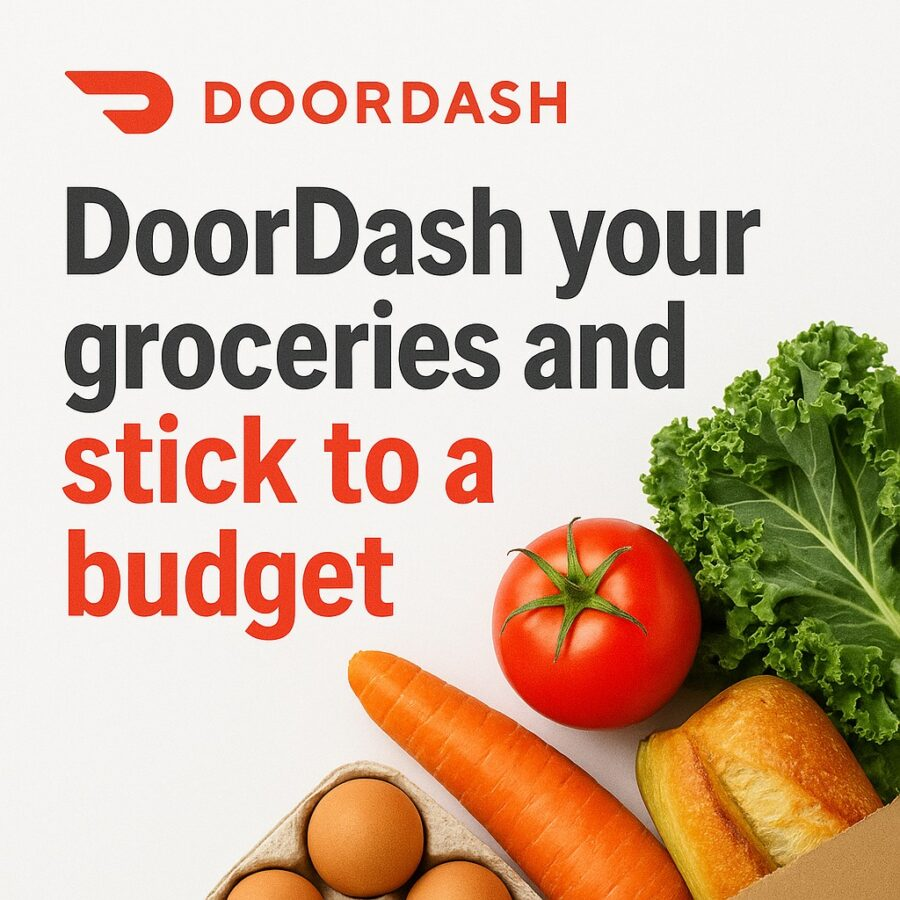Views: 0
Faces do not scale. Systems do. The creator who learns to package outcomes as a service with clear scope and fixed pricing can win clients while avoiding custom chaos. The Prompt Scientist’s Guide To Productized Services is your lab manual for turning expertise with language models into a repeatable offer that sells itself, delivers fast, and compounds over time.
Visit Alt+Penguin for companion checklists and templates. You can also grab plug-and-play assets on the Downloads page and production files in the Shop.
What a productized service is and why prompt scientists should care
A productized service is a standardized, packaged service sold like a product. It has a defined scope, clear deliverables, a set price, and a predictable timeline. Think of it as a menu item rather than a custom order. This format reduces sales friction for buyers and reduces context switching for you. Recent guides describe the model as moving from one-off projects to repeatable outcomes with published pricing and options for add-ons. (ManyRequests)
Service researchers frame this shift as productization. Variable, bespoke work gets transformed into a well-specified offering that can be branded, priced, and scaled. That transformation is powerful for anyone using prompt engineering, because prompts thrive on repeatable inputs and tight feedback loops. (ScienceDirect)
Managers have long known that services become more profitable when you standardize the experience, codify the backstage operations, and make the value visible to the customer. That is the same logic behind moving from improvisation to a recipe. (Harvard Business Review)
The 2025 tailwinds that make productized services hot
Three forces make this moment ideal.
First, short, packaged outcomes are easier to buy in a world where decision makers skim and compare. Second, process standardization improves consistency and unlocks better use of AI and analytics. Third, subscription behaviors have trained buyers to prefer clear offers with steady value. Analyses of service productivity and standardization highlight how consistent processes raise quality and make advanced tooling more effective. (McKinsey & Company)
If you work in prompts, you already write steps, checks, and outputs. Productization lets you sell those outcomes. Harvard Business Review’s guidance on turning services into productized motions shows how packaging, automation, and analytics help experts scale revenue without diluting quality. (Harvard Business Review)
The core elements of The Prompt Scientist’s Guide To Productized Services
Use this blueprint to design your first or next offer.
1) Outcome definition
Name the result in plain English. Buyers purchase outcomes, not hours. Use a single sentence that includes who it is for, what changes, and how fast it happens.
Prompt: Write a one-sentence outcome for a productized service that transforms messy knowledge base articles into clean SOPs in 5 days. Use simple language and include who it helps and the turnaround time.
2) Scope and constraints
List what is included, what is excluded, and how many rounds of revision exist. Treat this as a contract with guardrails. Clear scope is how you protect margins while staying generous in communication.
Prompt: Create a scope table with three columns titled Included, Excluded, and Optional Add-Ons for a productized SEO audit powered by ChatGPT-5. Keep each bullet under 12 words.
3) Service blueprint
A service blueprint maps the customer experience, frontstage touchpoints, backstage tasks, and support systems as one picture with swim lanes. It forces clarity about who does what and when the baton gets passed. This tool has decades of evidence behind it in service design. (Harvard Business Review)
Prompt: Describe a five-lane service blueprint for a “Prompt Library Makeover” offer. Lanes are Customer Actions, Frontstage, Backstage, Tools, and Evidence. Return it as a numbered list I can paste into a slide.
4) SLAs, SLOs, and proof
Set explicit performance targets. An SLO is a target for a service metric that you measure with a specific indicator. Your SLA is the promise to clients and the remedy if you miss. Translating reliability ideas from software keeps your offer credible. (Google SRE)
Prompt: Draft three SLOs for a productized “Inbox-to-Brief” research service. Include turnaround time, factual accuracy rate, and citation completeness with measurable thresholds.
5) Pricing logic that fits the value
Value-based pricing ties your price to the result rather than the time spent. It pushes you to articulate the economic impact of the outcome and to publish clear, simple tiers. Use tier names that match buyer intent such as Starter, Growth, and Scale. (Harvard Business Review)
To check if your price makes sense, track your customer acquisition cost and payback period. Subscription and SaaS operators use CAC and CAC payback to judge offer economics, and the logic transfers to productized services with monthly plans. (Stripe)
Prompt: Create a pricing grid with three tiers for a “Content Repurposing Lab.” Include price, turnaround time, deliverables, revision limits, and a single value metric that scales the price.
6) Evidence and differentiation
Buyers want proof. Case snapshots, before-after metrics, and samples beat vague claims. Well known productized design firms demonstrate the power of a clear subscription with simple promises and reliable turnarounds. Some public writeups describe seven-figure run rates for one-person design shops using a monthly subscription. Treat any numbers as directional and focus on the pattern that matters, which is simple scope with consistent delivery. (Copyblogger)
Prompt: Turn this client story into a three-slide case snapshot: context, obstacle, outcome. Each slide needs one headline and two bullets with numbers.
Affiliate Link
See our Affiliate Disclosure page for more details on what affiliate links do for our website.
Packaging ideas for prompt scientists that sell right now
Use these patterns as starting points. Swap in your niche.
Offer A: Research-to-Brief
You harvest messy inputs from meetings, drive recordings, and long threads. You then return a single executive brief with sources and a speaking outline within 72 hours.
- Who buys: owners, heads of marketing, busy creators.
- Inputs: call transcripts, PDFs, links.
- Outputs: one-pager brief, 12-slide deck outline, references.
- SLOs: 95 percent citation completeness, 72 hour turnaround, readability at 10th grade. (Google SRE)
Prompt: Generate a two-paragraph method section for a Research-to-Brief productized service. Include collection, synthesis, and verification steps with a factual accuracy check.
Offer B: Prompt Library Makeover
You refactor a client’s prompts into tested, named, and documented patterns. Each prompt includes example inputs, expected outputs, failure modes, and evaluation instructions.
- Who buys: agencies, content teams, solo creators.
- Inputs: current prompts, sample data, brand voice.
- Outputs: 20 optimized prompts with usage cards and a mini-guide.
- SLOs: 90 percent pass rate on acceptance tests, 5 day delivery.
Prompt: Write 10 short prompt names for a Prompt Library Makeover. Each name should be two to three words and describe the job to be done.
Offer C: SEO Content Sprint
You ship a tight bundle each week. One long article, one short, one carousel, three Shorts scripts, and a social caption pack. You include a search intent map to keep content aligned with what people actually type into search bars.
- Who buys: local service businesses, SaaS founders, niche blogs.
- Inputs: seed topics, competitor links.
- Outputs: weekly content bundle with an internal linking plan.
- SLOs: delivery cadence every 7 days, documented sources, and keyword intent notes. Research on social search and discoverability supports the approach of matching language to user queries. (SPP)
Prompt: Create a topical map with 12 long-tail keywords for a pest control company targeting one metro area. Label each by search intent and funnel stage.
Build the backstage like a pro
Productized services work when the backstage is tight. Standardize intake, quality checks, and handoffs. That is where you earn your margins and your referrals.
Intake that removes friction
Use a single form and a single kick-off call. Collect links, files, constraints, and examples. If a client cannot provide inputs within a set window, push the start date to protect your SLOs. Document the rules as part of your service blueprint so your frontstage never invents the process on the fly. (Strategic Management Insight)
Prompt: Write an intake checklist with 12 items for a Content Sprint service. Separate it into Must Have and Nice To Have.
Quality checks that scale judgment
Adopt a two-pass review. Pass one checks structure and scope. Pass two checks facts and tone. For reliability, define a quick rubric that scores accuracy, completeness, and readability, then track your Net Promoter Score to see if the experience matches the promise. NPS is a simple metric built from a single recommendation question and is widely used to monitor loyalty. (Bain)
Prompt: Create a 10 point quality rubric for AI generated drafts. Include accuracy, citation quality, structure, and voice. Return as a table I can paste into Notion.
Turnaround and escalation
Publish turnaround windows for each deliverable size. Publish escalation paths for blockers. When you miss a threshold, apply the SLA remedy you promised, such as a credit. This posture builds trust. The SRE literature draws a clear line between internal targets and external promises, which is useful for creative services as well. (Google Cloud)
Prompt: Draft an SLA section with remedies for a productized design subscription. Include credit rules for late delivery and a response-time policy for support tickets.
Affiliate Link
See our Affiliate Disclosure page for more details on what affiliate links do for our website.
Subscribe to Amazon Prime today and be prepared for the Spooky Season.
(Click the image below to Join Amazon Prime using our affiliate link.)
Pricing that respects the outcome and the math
Price for the result, not your calendar. If your SEO Content Sprint helps a plumbing company book four extra jobs a week, the value is not tied to hours. Value-based pricing forces you to articulate the business case, which leads to better sales calls and less haggling. (Harvard Business Review)
Still, respect the arithmetic. Track your CAC and your CAC payback period, especially if your offer is monthly. Even solo operators benefit from thinking like a subscription business. Stripe’s 2025 primer on CAC explains how payback time shows whether growth is healthy. (Stripe)
Prompt: Calculate CAC and CAC payback using this data: last month I spent 1200 dollars on marketing and added 6 new clients at 300 dollars monthly each. Return the CAC, the payback in months, and a one sentence interpretation.
Positioning and proof without bragging
Borrow the simplicity used by well known design subscriptions. Their pages show a one line promise, a few sample deliverables, a queue system, and a pause button for subscriptions. Independent writeups and forum posts have discussed eye-catching revenue numbers for these firms, but the durable lesson is the packaging and consistency rather than the headline. Keep your message simple, then back it with specific samples. (Copyblogger)
Prompt: Write a four line value proposition for a research subscription. Line one states the promise. Line two lists two proof points. Line three names the ideal buyer. Line four gives the first step.
Affiliate Link
See our Affiliate Disclosure page for more details on what affiliate links do for our website.
Standardization, data quality, and AI
Good prompts on top of bad data still produce noise. Reports on product data standardization show that consistent inputs increase quality and enable better AI performance. The same logic applies to your service. Standard files, naming rules, and acceptance criteria make your outputs reliable and your edits fast. (McKinsey & Company)
Prompt: Propose a file naming convention and folder structure for a productized content service. Include versioning rules and an archive policy.
Marketing the productized way
Your funnel can be small and still work if you are specific and find the right buyers.
- Point demand to the exact outcome. Use search intent words in your page title, opening sentence, and FAQ.
- Show the scope and timeline. Buyers want to know how it works and when it lands.
- Publish the price. Hiding the price increases friction.
- Put samples above the fold. Screenshots of deliverables build trust.
- Offer a pilot. A one week or one bundle trial reduces risk.
- Collect NPS and reviews. Publish the question and your current score for transparency. NPS is calculated as the percentage of promoters minus detractors. (Bain)
Link from your service page to useful collateral. A starter kit on the Downloads page helps visitors try your method. A paid template in the Shop gives buyers a way to upgrade if they are not ready for the full service. Cross linking within Alt+Penguin helps readers move from curiosity to action.
Prompt: Write a service page outline for a Prompt Library Makeover. Sections are Promise, Scope, Samples, Pricing, FAQs, and Next Steps. Keep each bullet short.
Affiliate Link
See our Affiliate Disclosure page for more details on what affiliate links do for our website.
Operating metrics that keep you honest
Track a handful of numbers. You do not need a dashboard forest.
- Lead to close rate: are your page and pitch clear.
- Average turnaround time: by deliverable size.
- Revision rate: by deliverable type.
- On time rate: measured against your SLOs. (Google SRE)
- NPS: ask the one question and track the score monthly. (Net Promoter System)
- CAC and CAC payback: sanity checks for monthly plans. (Stripe)
Prompt: Create a weekly one page operating review for a productized service with the metrics above. Return it as a simple checklist with spaces to fill in numbers.
Your first delivery week, step by step
Here is a compact schedule you can repeat.
Day 1: Intake and blueprint. Confirm scope. Fill in the client lane of your blueprint. Identify missing inputs. Set the delivery date in writing. (Strategic Management Insight)
Day 2: First draft. Focus on the core outcome. Avoid polishing. Push for structure, sources, and correctness.
Day 3: Internal review. Score against your rubric. Fix structure and gaps.
Day 4: Client review. Share a concise summary plus the draft. Ask the client to mark facts, tone, and must-keep lines.
Day 5: Final. Apply revisions. Ship the deliverables, acceptance checklist, and a short debrief. Ask the NPS question within 24 hours. (Bain)
Prompt: Write a five day production schedule for a Research-to-Brief service with task owners, artifacts, and acceptance criteria.
Affiliate Link
See our Affiliate Disclosure page for more details on what affiliate links do for our website.
Risk management and ethics for AI-powered services
Clear boundaries keep trust high. Publish your data handling rules. Do not train on client data without consent. Keep revision limits explicit. Use citations in deliverables that rely on outside sources. If you promise fact checking, state your process. If a client asks for claims you cannot verify, document the uncertainty.
Prompt: Draft a data handling policy paragraph for an AI-assisted research service. Include consent, storage duration, and deletion upon request.
How to widen your average order without bloating scope
Attach add-ons that are modular and priced. Good add-ons amplify the core result rather than expanding it in random directions.
- Audit add-on: a quick health check before the main work.
- Template add-on: reusable documents, dashboards, or prompt packs.
- Training add-on: a one hour walkthrough recorded for the client.
- Analytics add-on: simple performance tracking for 30 days.
Each add-on should be installable without changing your blueprint lanes. That is how productized services keep their speed. (Harvard Business Review)
Prompt: List four modular add-ons for a Content Sprint service with a one sentence description and a flat price suggestion for each.
Examples you can study for patterns
Look at public case writeups for productized services to observe packaging, queue systems, and subscription dials. Articles and community posts discuss examples such as design subscriptions and specialized content services, with recurring themes of simple headlines, published prices, and clear limits on scope. Treat revenue figures as anecdotes rather than benchmarks. Focus on process design, scope lines, and customer communication. (SPP)
Prompt: Analyze the hero section of a productized service landing page. Write five bullet points on what works and a one sentence suggestion to improve clarity.
Integrate The Prompt Scientist’s Guide To Productized Services into your stack
Save time by templatizing these assets and linking them from your service Notion or Google Drive.
- Service blueprint: five swim lanes with one glance clarity. (The Interaction Design Foundation)
- SLO sheet: three targets and how you measure them. (Google SRE)
- Quality rubric: 10 checks for each draft.
- SLA page: plain language remedies for misses. (Google Cloud)
- Pricing grid: value-based tiers with one value metric scaling price. (Harvard Business Review)
- Metrics tracker: NPS, CAC, and payback. (Bain)
Prompt: Create a Notion page outline titled Productized Services Control Room with sections for Blueprint, SLOs, SLA, Pricing, Samples, and Weekly Review.
Affiliate Link
See our Affiliate Disclosure page for more details on what affiliate links do for our website.
Closing the loop with simple, strong outreach
Do not hide. Publish the page. Share two samples on social. Invite five past clients to try a pilot. Put the NPS question into your handoff email. That loop generates testimonials and steady referrals.
When you can say your offer in one breath, when your blueprint is boring in the best way, and when your SLOs are visible, buyers relax. They know what they will get and when they will get it. That is the real magic behind The Prompt Scientist’s Guide To Productized Services.
Prompt: Write a 90 word outreach message to a past client offering a one week pilot of a productized Research-to-Brief service. Mention the fixed price, the deliverables, and the turnaround time.
You now have the components to package your work like a product without losing craft. Standardized flow. Clear promises. Evidence on delivery. Pricing tied to value. Metrics that keep the machine honest. Keep this playbook handy, and when you need tools or examples, stop by Alt+Penguin, grab assets from Downloads, or pick up working templates in the Shop.






](https://altpenguin.com/wp-content/uploads/2025/08/veed-ad.webp)

